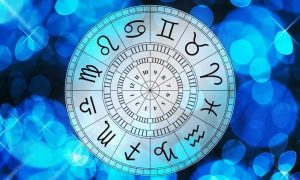Application forms for the Central Universities Entrance Test (CUET) for undergraduate programmes will be available from April 2, the National Testing Agency (NTA) of the Ministry of Higher Education has announced. The application window will remain open till April 30.
The NTA has advised candidates to go through the details, including the eligibility criteria, of the programmes on offer by visiting the websites of the universities they wish to apply to. Once they pick their courses and universities, they can visit the CUET website (https://cuet.samarth.ac.in/) and submit their applications.
The entire process is digitised, including the exam which will be a multiple-choice question paper. The Indian Express addresses some of the frequently asked questions about the entrance exam which is likely to be held in the first week of July.
What will be the format of the test?
The test, based on NCERT’s Class XII syllabus, will be broadly divided into four sections. Under Sections IA and IB, applicants will have to sit for papers on languages. Each of the sections will contain 50 questions of which one has to attempt 40. The papers on languages will test a candidate’s language skills through comprehensions based on factual, literary, and narrative passages. Candidates will be expected to answer questions set in the MCQ format based on their understanding of the passages.
Why are there two different sections for languages?
Section IA will be compulsory for all. It will test a candidate’s command over English or an Indian language to be chosen from a basket of 12 — Hindi, Marathi, Gujarati, Tamil, Telugu, Kannada, Malayalam, Urdu, Assamese, Bengali, Punjabi, Odia. The duration of the test will be 45 minutes.
Section IB is for those looking to pursue undergraduate degree programmes in foreign languages. Students can pick from a list of 19 languages — French, Spanish, German, Nepali, Persian, Italian, Arabic, Sindhi, Kashmiri, Konkani, Bodo, Dogri, Maithili, Manipuri, Santhali, Tibetan, Japanese, Russian and Chinese — offered by certain Central Universities.
What are the remaining two sections about?
Section II of the test will test a candidate’s command over core subjects they wish to pursue at the undergraduate level.
Accordingly, they can pick up to six subjects from a list of 27 — Accountancy/ Book Keeping; Biology/ Biological Studies/Biotechnology/Biochemistry; Business Studies; Chemistry; Computer Science/ Informatics Practices; Economics/ Business Economics; Engineering Graphics; Entrepreneurship; Geography/Geology; History; Home Science; Knowledge Tradition and Practices of India; Legal Studies; Environmental Science; Mathematics; Physical Education/ NCC /Yoga; Physics; Political Science; Psychology; Sociology; Teaching Aptitude; Agriculture; Mass Media/ Mass Communication; Anthropology; Fine Arts/Visual Arts (Sculpture/ Painting)/Commercial Arts; Performing Arts – (i) Dance (Kathak/ Bharatnatyam/Odissi/ Kathakali/Kuchipudi/ Manipuri (ii) Drama- Theatre (iii) Music General (Hindustani/ Carnatic/ Rabindra Sangeet/ Percussion/ Non-Percussion); Sanskrit.
A candidate will have to attempt 40 out of 50 questions in 45 minutes.
Section III of the exam will be based on general knowledge for any such undergraduate programmes that require admission based on a General Test rather than scores of domain subjects. So, this will be taken by candidates who want to sign up for such courses only. The paper, for which an hour will be given to candidates, has been designed to assess their general knowledge, current affairs, general mental ability, and numerical ability. It will also test quantitative reasoning through simple application of basic mathematical concepts of arithmetic/algebra, geometry/mensuration taught till Class VIII. In this paper, there will be 75 questions of which 60 will have to be attempted.
How many papers can a candidate choose to take?
According to the NTA, candidates can take up to nine papers in two different combinations. Under the first combination, a candidate can pick up to two language papers spread over Section IA and IB; up to six domain subjects; and a general test. Under the second, one can pick up to three languages; up to five domain subjects; and a general test. In both cases, the maximum number of papers that can be taken shall be nine.
What if one does not find the desired subject among the 27 being offered?
In such cases, the NTA says that the candidate may choose the subject closest to their choice. For example, those willing to pursue a BSc in Biochemistry may choose Biology. “Generally, the languages/subjects chosen should be the ones that a student has opted for in their latest Class XII Board examination. However, if any University permits any flexibility in this regard, the same can be exercised under CUET (UG) -2022 also. Candidates must carefully refer to the eligibility requirements of various Central Universities in this regard,” the NTA stated.
Can a student who has cleared Class XII in previous years take the CUET this year?
According to the NTA, if any university permits students who have cleared Class XII in previous years to take admission in the current year, they would also be eligible to appear for it.
How will universities prepare merit lists and admit students?
The CUET will not rank students. It will just provide them scores. There will be negative marking for wrong answers. Also, marks scored in the Class 12 Board examination will not be given any weightage. However, universities have been given the option to use the Board exam scores in one count. For example, a particular university can say, irrespective of a candidate’s score in the CUET, their application for admission will be considered only if they score at least 60 per cent in the board exams. However, that will vary from university to university and not all of them will use it as a qualifying criterion. These aspects will have to be checked by the candidates at the level of the universities they are applying to.
Will it be necessary for a student to take special classes to clear CUET?
The NTA says that all questions in various testing areas will be benchmarked at the level of Class XII only. “Students having studied Class XII Board syllabus would be able to do well in CUET (UG) – 2022.”
UGC chairperson M Jagadesh Kumar has also stressed that special coaching will not be necessary as the questions will be drawn-up based on the NCERT syllabus. “Board-wise syllabus variations will also be taken into account. These exams are not going to be like the IIT ones. Experts will moderate the difficulty level and questions will be confined to class 12 syllabus alone,” Professor Kumar said.
He added: “In the case of IIT entrances, over a million candidates compete for around 16,000 seats. However, in case of Central universities, Delhi University alone has around 70,000 seats and when the others (total 45) are taken into account, there are more than 2 lakh. The ratio of seats against applicants will be 1:5 as against 1:50 or 1:60 in case of IITs. Difficult questions drive people towards coaching centres, but in CUCET, the level will be moderated so that students are comfortable without special classes.”





































